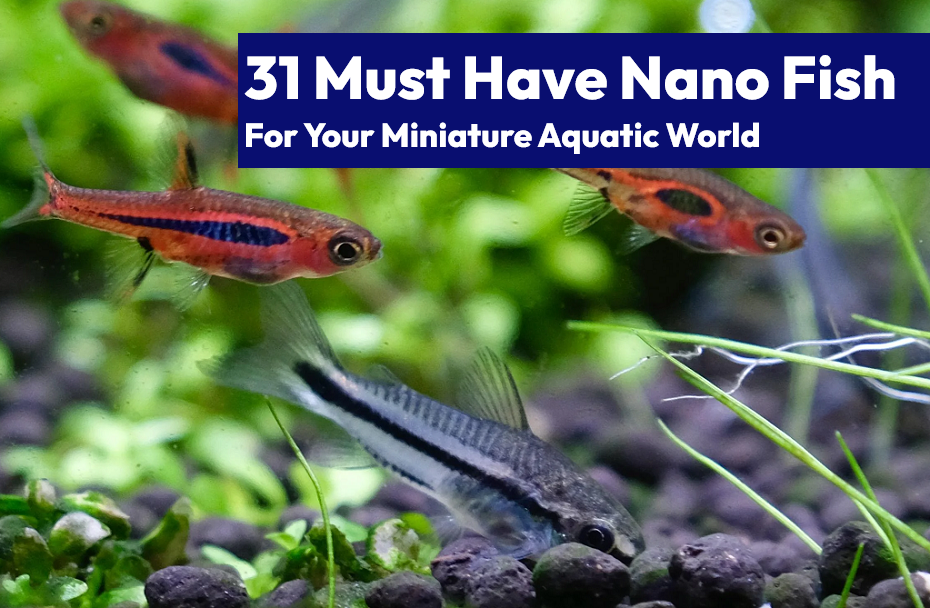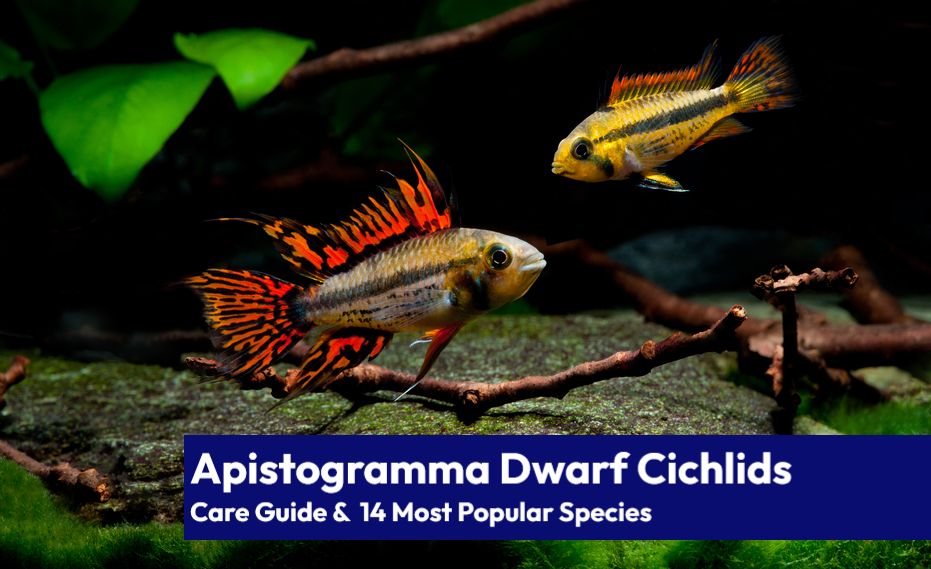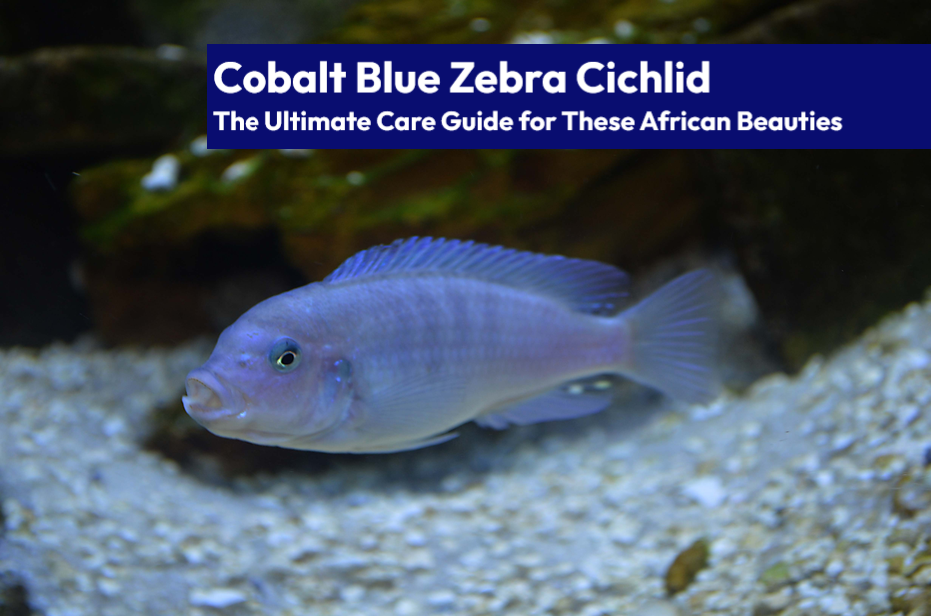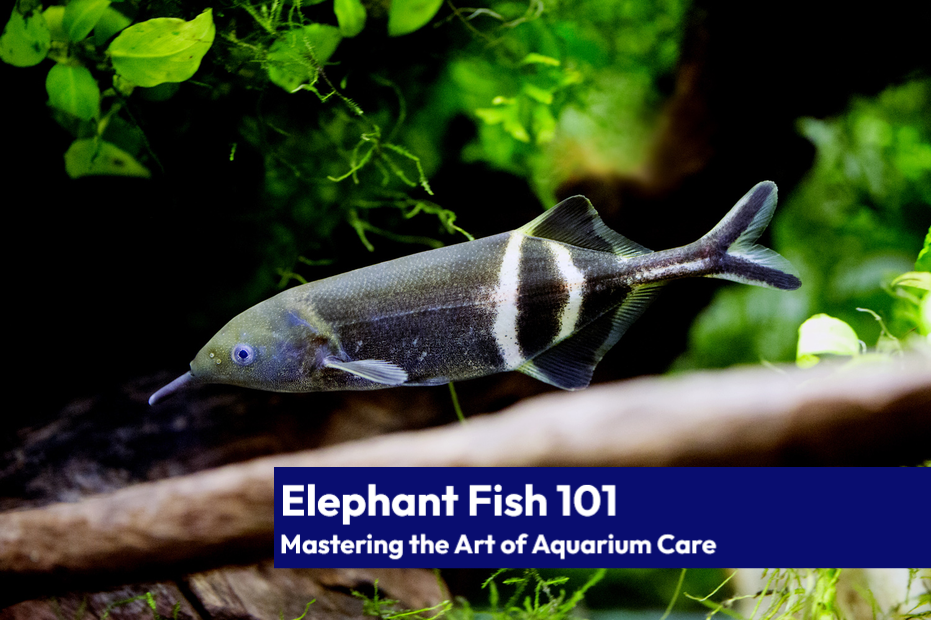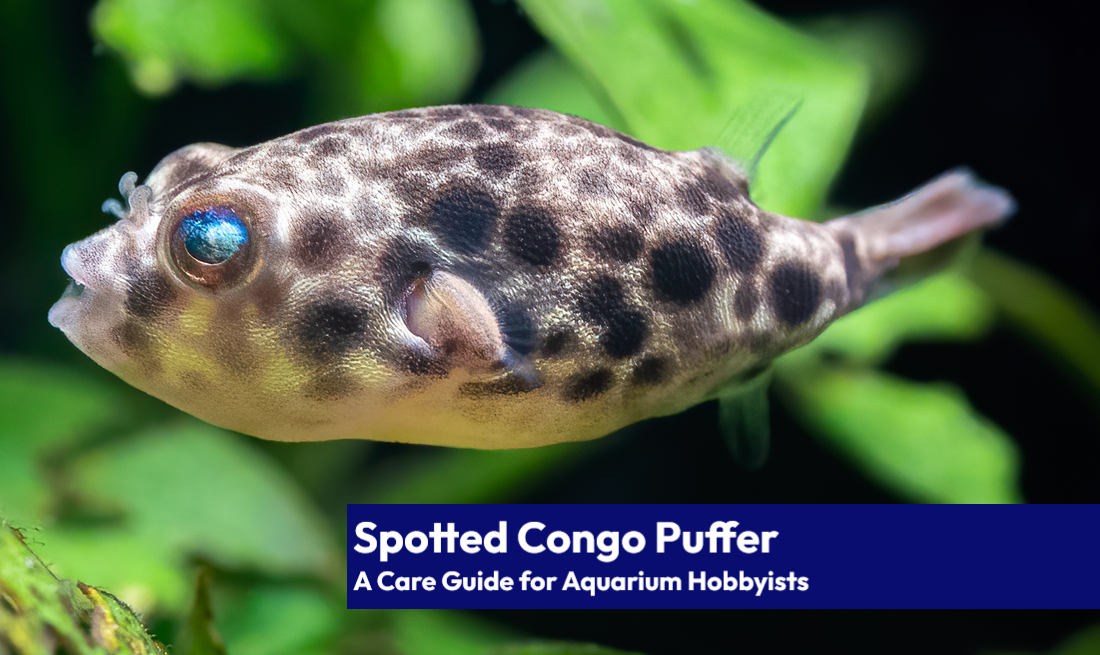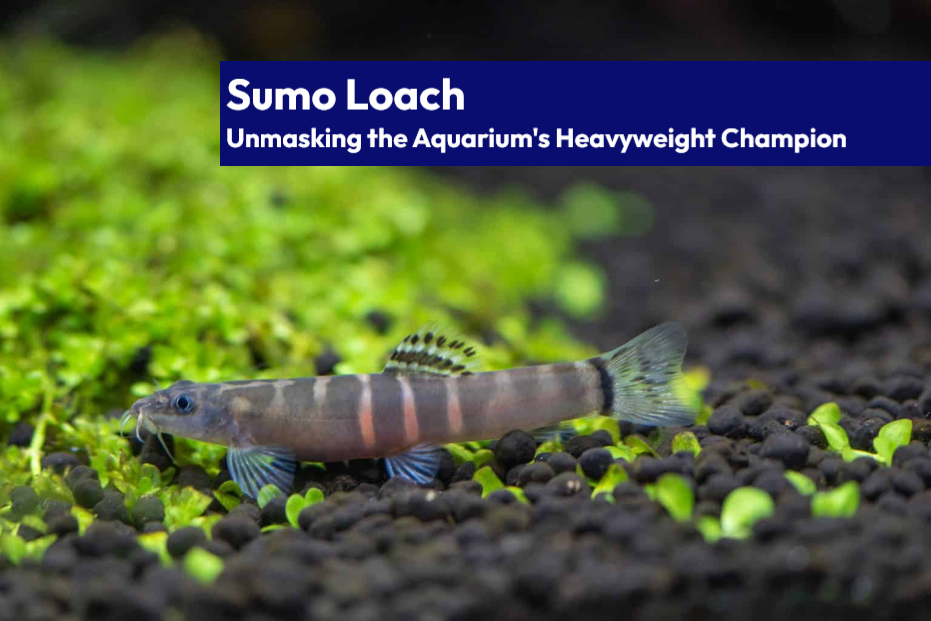Are you ready to dive into the world of nano fish and bring some sparkle to your aquarium? Look no further! With so many options to choose from, it can be tough to pick just the right fish to call your own. But don’t worry, we’ve got you covered!
We’ve rounded up the top 31 nano fish that are not only cute, but also super easy to care for and perfect for a small fish tank. Grab your snorkel and let’s dive in!
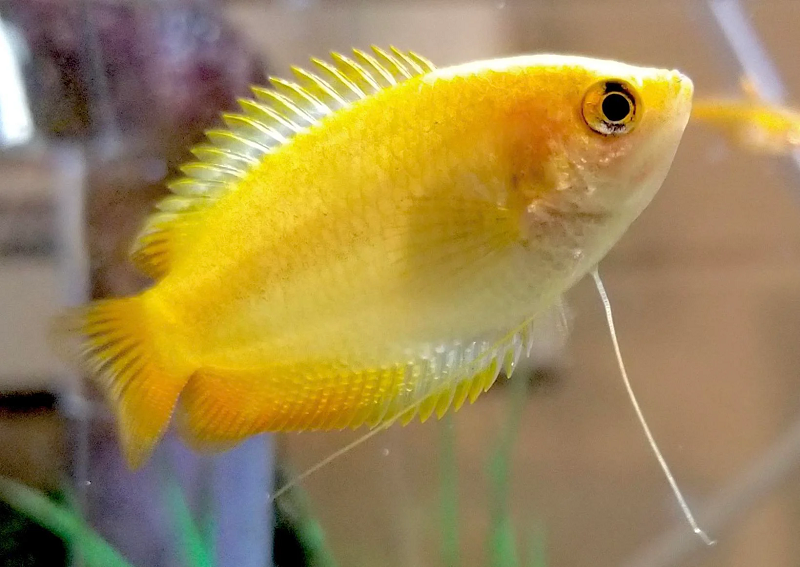
With its flat, oblong body and trailing whiskers, the honey gourami is a real stunner. And the best part? They’re peaceful creatures that won’t cause any trouble in your tank. The most common variety you’ll find in pet stores is the yellow or gold type, but you can also find wild type and red honey gouramis. Just be careful not to confuse them with the sunset thick-lipped gourami, which grows to 3.5-4 inches and can be a bit more aggressive. When courting a female, the male honey gourami’s throat and belly can turn a dark blue-black color. And when it comes to cost, you’re looking at anywhere from $5 to $10 depending on where you live and the color variety you choose.
- Pygmy Corydoras
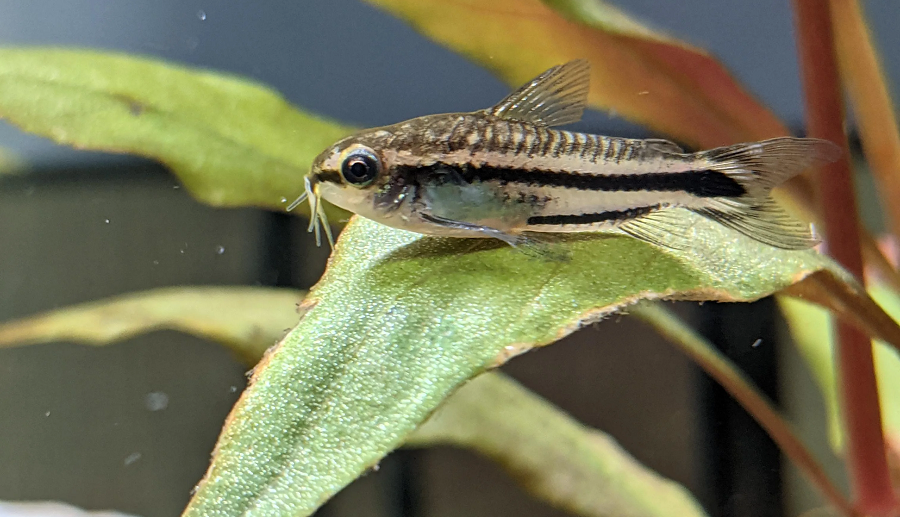
Ready for the cutest little fish you’ve ever seen? Meet the Pygmy Cory! This tiny guy is a bottom-dwelling fish that’s sure to bring a smile to your face. The females are about an inch long and the males are even smaller, reaching just 0.75 inches. The females tend to be a little wider, especially when they’re carrying eggs.
The Pygmy Cory has a silver body with two black lines that run from its snout to its tail fin. When the fry first hatch, they have vertical stripes, but these will fade to be replaced by the horizontal stripes after about a month. The black lines are how you can tell the Pygmy Cory apart from the Corydoras hastatus, which has black spots on its tail.
While they’re not the most colorful fish, their small size is what makes them so irresistible. To keep them healthy, it’s best to have a soft substrate like sand in your tank, as this will prevent their barbels from getting damaged when they search for food. These fish love having plenty of hiding spots, so be sure to include a mix of plants and decorations like rocks and bogwood to create a natural environment. The Pygmy Cory would love swimming through a carpet of Dwarf Hairgrass, or you could also use taller plants like Amazon Swords and Java Fern.
- Threadfin Rainbowfish
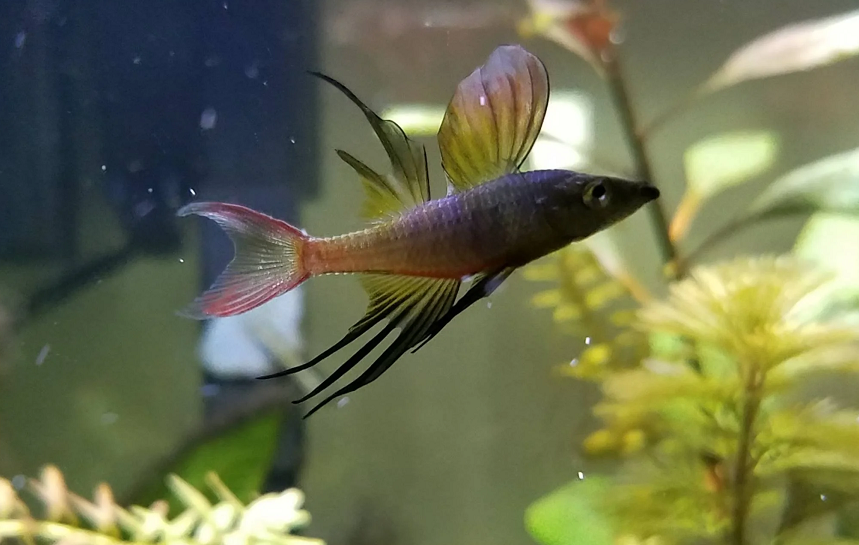
This spectacular-looking fish is a favorite among aquaculture enthusiasts, thanks to its unique shape, bright colors, and interesting movements. And the best part? Caring for them is a breeze, even for beginners, because they can easily adapt to most water parameters and are one of the most peaceful fish species out there.
The Threadfin Rainbowfish is a small freshwater species that grows to be about 1.2 to 1.6 inches from the tip of its snout to the origin of its caudal fin. Some reports suggest that older males can grow up to 2.4 inches long. These fish are incredibly peaceful and won’t cause any trouble in your community tank. In fact, they’re more likely to be on the receiving end of aggression from other fish because of their small size and large fins. But don’t worry – they’re absolutely harmless and won’t nip at other fish.
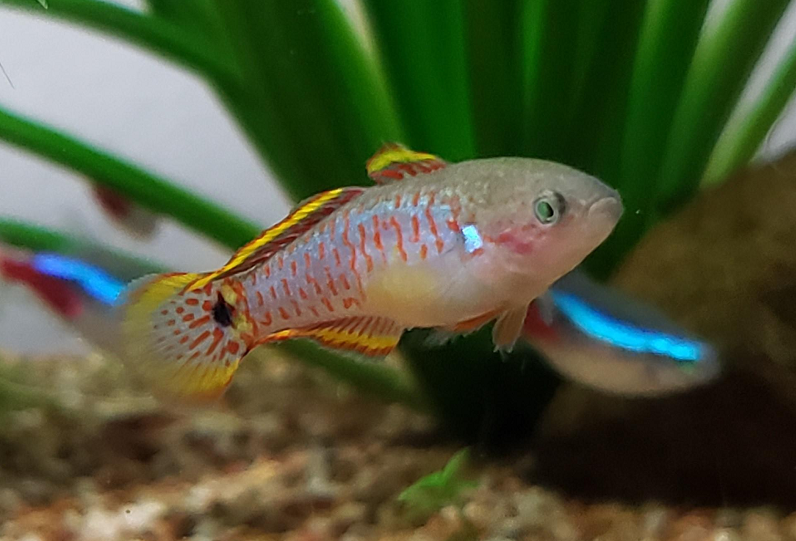
With its striking appearance and easy-to-care-for nature, it’s no wonder this species is so popular among fish hobbyists. The Peacock Gudgeon has a silvery-blue body with red dotted stripes, a yellow belly, and bright yellow fins with a black spot at the base of the tail fin, giving it its peacock-like appearance. Males can develop a nuchal hump on the forehead, while females have a thin strip of black on the edge of their fins.
Peacock Gudgeons are small, reaching an average length of 3 inches, and are relatively easy to care for. They don’t require challenging conditions and are well-suited for community tanks. These fish need stable water conditions and a carefully crafted environment, but their small size means they don’t need a large tank. They’re not fussy eaters and are known for their peaceful nature. With a lifespan of 4 to 5 years, the Peacock Gudgeon will bring beauty and personality to your tank for many years to come.
- Least Killifish
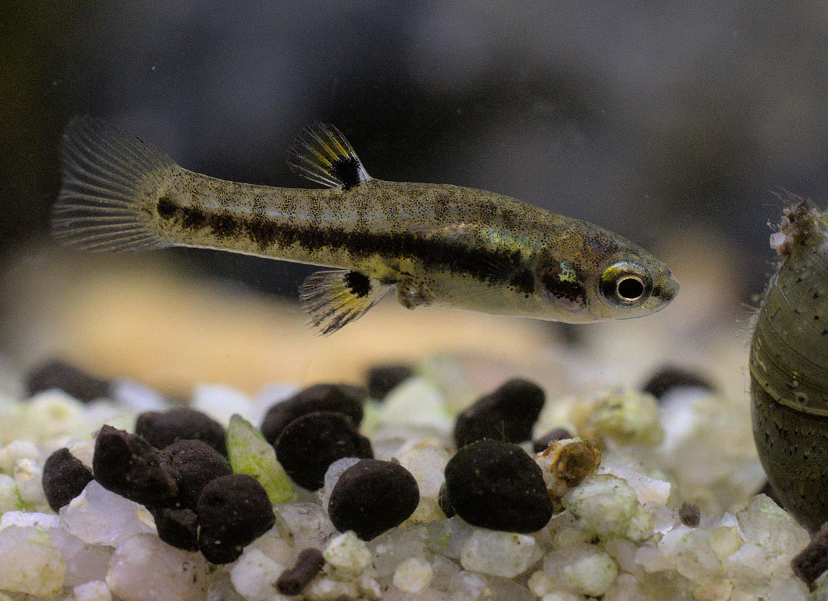
Least Killifish, also known as lesser killifish or dwarf top-minnows, are tiny livebearers that are perfect for beginners, nano aquariums, and small-species community tanks. These little guys are hardy and easy to care for, making them a great choice for those new to fishkeeping.
Least Killifish are only about 0.8 inches for males and 1.2 inches for females, making them one of the smallest fish species in the world. They can thrive in tanks as small as 5 gallons, making them a great option for nano tanks. With proper setup and maintenance, these little beauties will thrive and bring a unique touch to any tank.
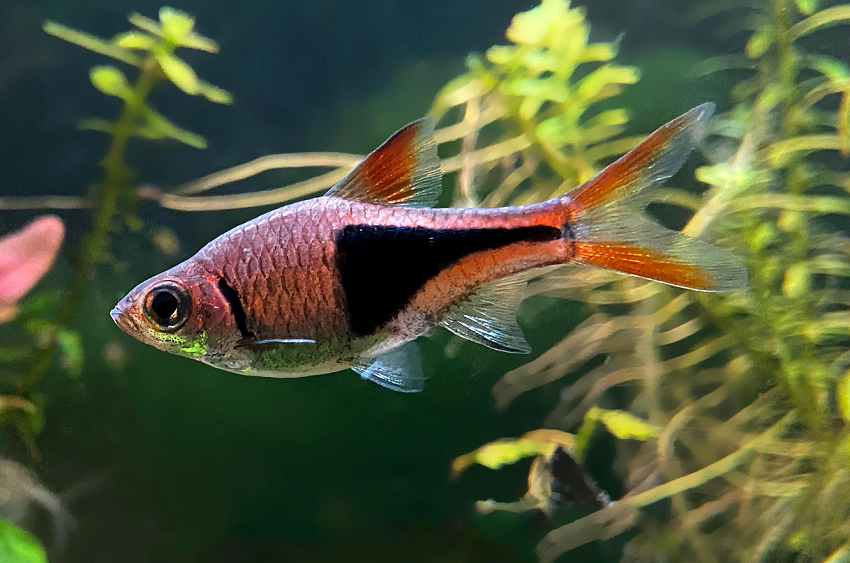
The Harlequin Rasbora is a freshwater fish that is a popular addition to aquariums due to its metallic, copper-red color and easy care. This peaceful fish is best kept in a community tank with other small-sized fish species and should be kept in schools of eight to ten individuals. With its striking black wedge that covers the rear half of its body, the Harlequin Rasbora is easy to differentiate from other similar species, such as the Pork Chop or Lamb Chop Rasbora, Narrow Wedge Rasbora, and Somphong’s Rasbora. This species is a great choice for a community tank and can be kept with other peaceful fish such as cardinal tetras, neon tetras, small barbs, dwarf gouramis, danios, and cory catfish.
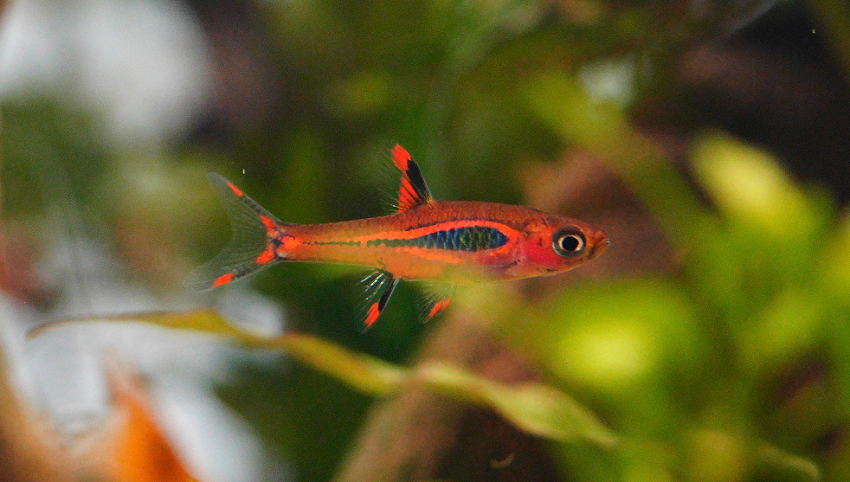
Chili Rasboras, also known as Mosquito Rasboras, are a must-have for any nano tank setup with live plants. These little fish pack a big punch with their deep, cool-toned red color and distinctive black markings. Despite their beauty, they can be overlooked in pet stores due to their small size and pale appearance when young. But with a little care, they can reach their full, vibrant adult coloration.
These tiny rasboras are close cousins to other micro rasboras like the exclamation point and strawberry rasboras, growing only to about ¾ of an inch (2 cm) long. They have a slender body and pointed fins. Although they can temporarily become paler when moving to a new tank, they will soon regain their true colors after a few weeks. Chili rasboras are also more bold than other nano fish, showing curiosity when approached by aquarium observers. They make a great addition to any nano tank and will keep you mesmerized with their beauty.
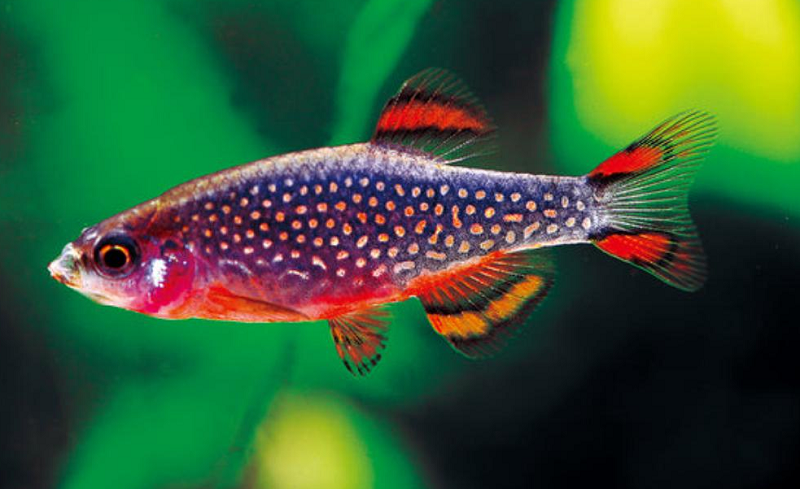
The celestial pearl danio, also known as the galaxy rasbora, is a stunning nano fish that will make any aquarium look like a work of art. With their golden spots on dark bodies, bright red-orange fins, and black striping, these guys are sure to captivate you with their beauty and elegance.
CPDs are native to Southeast Asia and are known to live in shallow waters with dense vegetation. They are a schooling fish and thrive in groups, so it’s best to keep at least six of them together, but we recommend 10 to 15 for best results. These peaceful nano fish are great with other community fish and are not aggressive, but they may chase each other to establish dominance or display breeding behavior. While they may do some fin nipping amongst their own species, they rarely go after other tank mates.
- Emerald Dwarf Rasbora
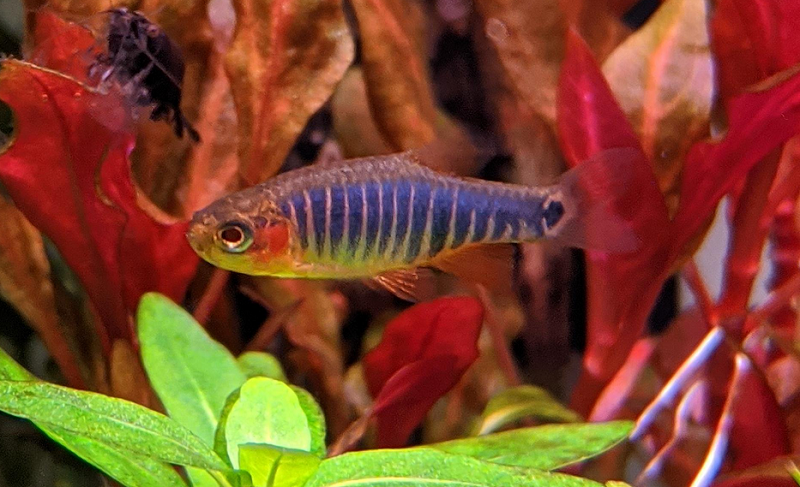
The Emerald Dwarf Rasbora, also known as Celestichthys erythromicron, is a must-have for any aquarium enthusiast looking to add some vibrant color and playful personalities to their tank. These freshwater fish are known for their coral pink or orange bodies, accented by thick stripes of emerald green. The stripes can sometimes appear more purple or blue, creating a stunning display as they swim around the tank.
Emerald Dwarf Rasboras are small, with an average length of 1 to 1.5 inches (2.5 to 3.8 cm), and are perfect for nano tanks. They have a steady growth rate and can live for three to five years. Males are generally smaller than females, but it can be difficult to tell the difference. These fish have large shimmering eyes, semi-transparent scales around the gill plate, and a large dot on both sides of the tail that mimic an eye, tricking predators in the wild.
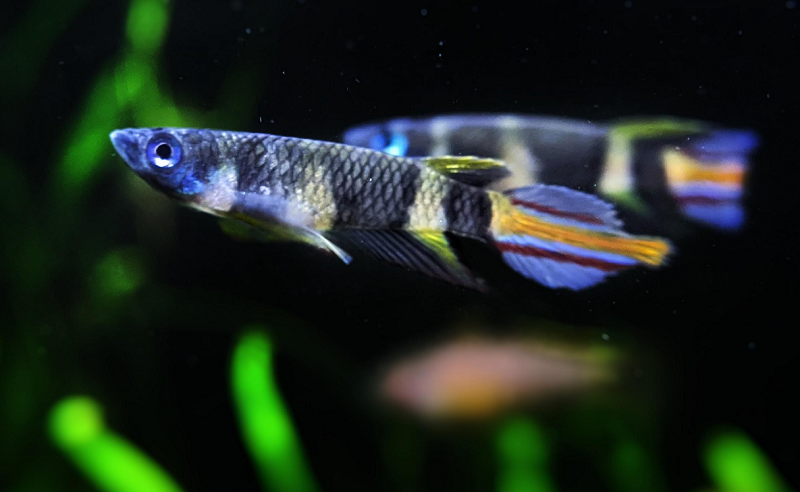
Clown Killifish, also known as the banded panchax, rocket killifish, or clown killi, are little fish with big personalities. These colorful fish are known for their alternating vertical bands of dark brown and tannish-yellow on their body and the vibrant, flame-like tail that males possess. They are easy to care for and can live in cooler temperatures making them a great addition to an unheated aquarium with other cool water species.
Although adult clown killies can reach up to 1.4 inches (3.5 cm), most of the fish sold at stores are juveniles around 0.5 inch long and won’t display their full red, yellow, blue, and orange colors until they are raised to maturity. To keep them happy, aim for a ratio of 1 male for every 2-3 females, as they can sometimes be territorial with each other. A larger group of clown killies allows them to feel more comfortable in their environment and display their natural social behaviors.
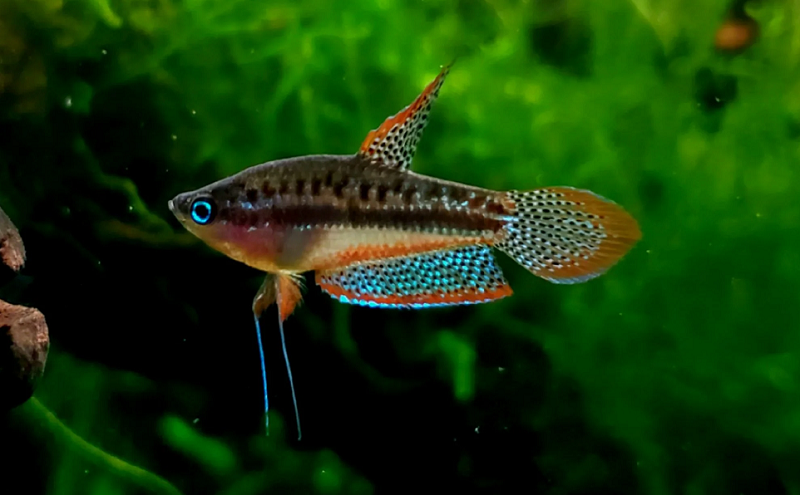
If you’re looking for a small, shimmering freshwater fish, then the Sparkling Gourami, also known as the Pygmy Gourami, is a great option. These colorful fish come from Southeast Asia and belong to the Osphronemidae family and the Anabantiformes order. They are labyrinth fish, which means they have a special breathing organ that allows them to take in oxygen straight from the air.
Sparkling Gourami are small, with fins that are about 30% of their body length. They have a unique appearance, with brown bodies covered in green, blue, grey, or white spots and fins that have black dots on a light blue background. The scales of the Sparkling Gourami beautifully reflect light, making the fish appear to be sparkling. Each fish has a unique color pattern, so even though they’re the same species, they’ll look different from one another. These fish usually live up to 5 years, but in good aquarium conditions, they may live longer. They usually sell for $2-$5, but the price can vary depending on the health and condition of the fish and where you’re purchasing it from.
- Red Cherry Barb
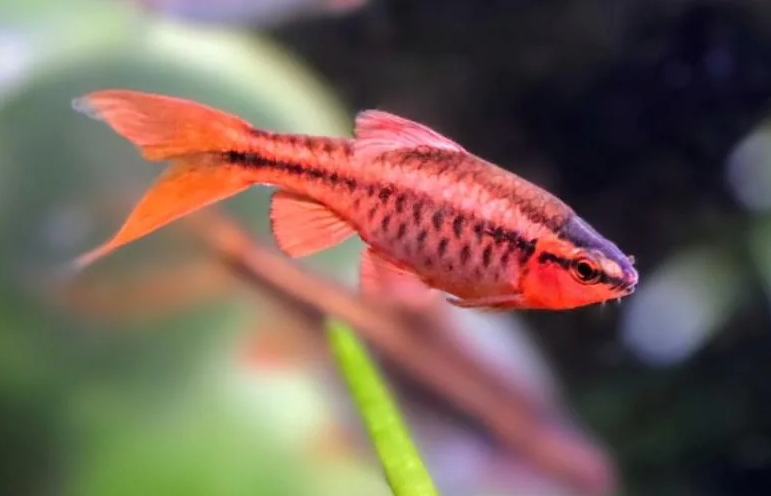
Ready for a pop of color in your aquarium? Look no further than the Red Cherry Barb! These slender fish are a staple in the freshwater community tank and are easy for beginner aquarists to care for. While male Red Cherry Barbs are known for their vibrant red color during spawning season, the rest of the year they tend to be tan to dark brown with hints of red and orange.
Cherry Barbs are social creatures, and they like to swim in schools of 5-6. They are compatible with other barb species like the Rosy Barb or Black Ruby Barb, and peaceful tetras like the Neon Tetra. Make sure to match the water parameters of all your tank mates, and these fish will be a lively and colorful addition to your aquarium. During spawning, the males will turn a brilliant red, while the females will become more rounded as they mature with eggs. But if they’re not in the mood to breed, male and female Red Cherry Barbs can look very similar.
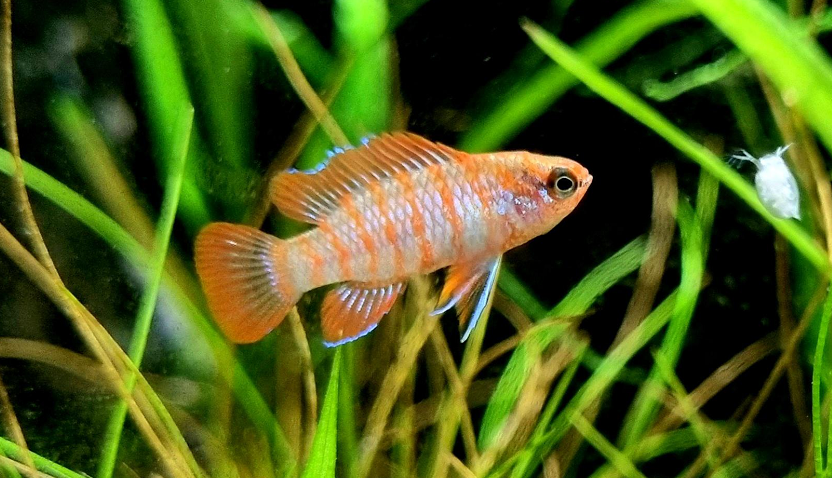
Wow, the scarlet badis are simply stunning! They are one of the most popular freshwater fish and a must-have for any fish enthusiast. They are a joy to watch, with their bright colors and active behavior. Keeping them healthy is a breeze too, making them a great choice for those who don’t want to spend too much time on fish maintenance.
The males are the real showstoppers, with their vibrant colors and patterns. They have a base color of either orange or red and are covered in vertical stripes that are either orange or light blue. The light blue edges of their fins are particularly eye-catching and create a flickering effect that is simply mesmerizing. So, make sure you keep your scarlet badis in a healthy environment and watch them shine!
- Coral Red Pencilfish
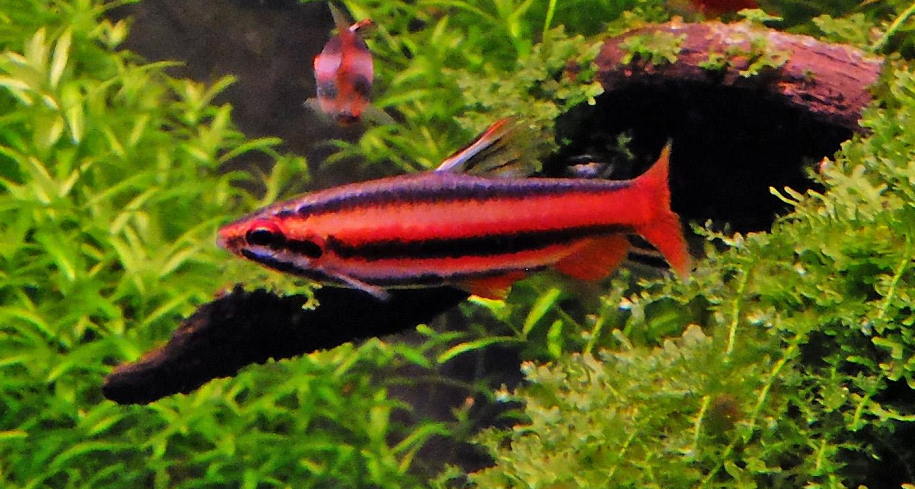
Coral Red Pencilfish are one of the most sought-after fish species in the aquarium world, and for good reason! These little guys are not only hardy, but they also boast a beautiful, intense red color that makes them stand out in any tank. With several common names like “red arc pencilfish” and “ruby red pencilfish”, they are sure to turn heads.
These fish are active and social, so it’s best to keep them in groups. They also love planted tanks, which makes them a great choice for nano tank setups. They are known as “$20 pencilfish” due to their initial high price, but with more and more captive-bred specimens becoming available, the cost has dropped. They are a micropredator, so they love live or frozen foods, but they will also take all regular aquarium fare. Although they have just started being bred by aquarists, they are reportedly not too difficult to spawn. So, if you’re looking for a unique and beautiful addition to your tank, the Coral Red Pencilfish is a great choice!
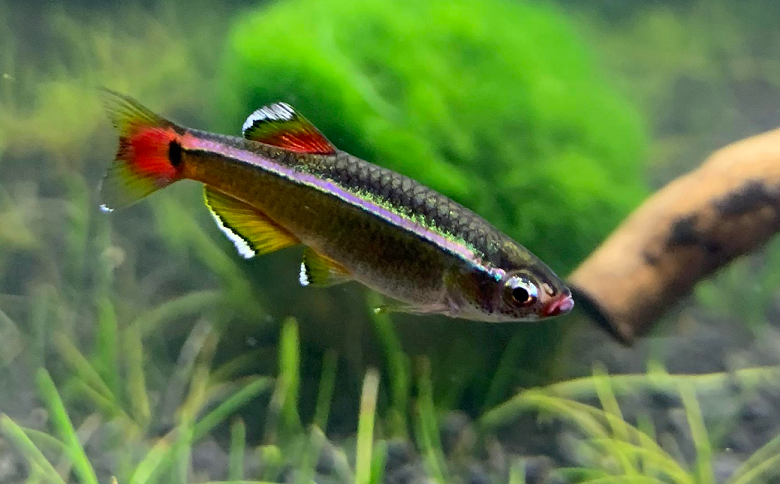
White Cloud Mountain Minnows, also known as “the working man’s neon”, are a must-have for any aquarium enthusiast. These little fish pack a big punch of color and are not as expensive as neon tetras. With several species in the genus, the most popular in the aquarium trade is the Tanichthys micagemmae (Vietnamese white cloud).
These fish are small and grow to an adult length of 1 1/2 inches (4 cm), with the males being slimmer and more colorful than the females. They love to swim near the top or middle of the tank and have a unique upward-slanting mouth with a slightly protruding lower jaw. Their shimmering bronze-brown bodies are accented by a fluorescent line running from eye to tail and a dark spot surrounded by brilliant red. The white belly and red-splashed fins complete their stunning appearance. With several color variations, including a golden variety and a long-finned variant known as the meteor minnow, you’re sure to find the perfect White Cloud Mountain Minnow for your tank!
- Forktail Rainbowfish
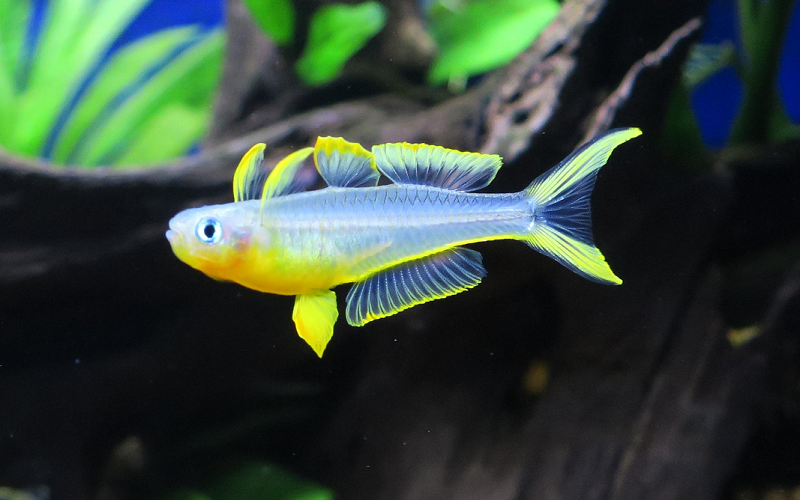
Are you tired of the same old guppies and zebra danios in your aquarium? Let us introduce you to the forktail rainbowfish, also known as the furcata rainbowfish! This nano fish hails from the rainforests of Papua New Guinea and is sure to add a pop of color to your tank. With its glowing blue eyes, yellow fins, and distinct fork pattern on the tail, it’s a real showstopper.
The forktail rainbowfish is a speedy swimmer, so make sure you have a 20-gallon aquarium or bigger to give them plenty of room. They love temperatures between 75–80°F (24–27°C), slightly alkaline pH above 7.0, and at least 5° (90 ppm) GH. As a schooling fish, they do best in a group, so start with at least three pairs (or two males and four females). To recreate their natural habitat, consider setting up a forest of live aquarium plants. These fish have even been successfully kept in community tanks with bettas, but keep an eye on the betta’s temperament.
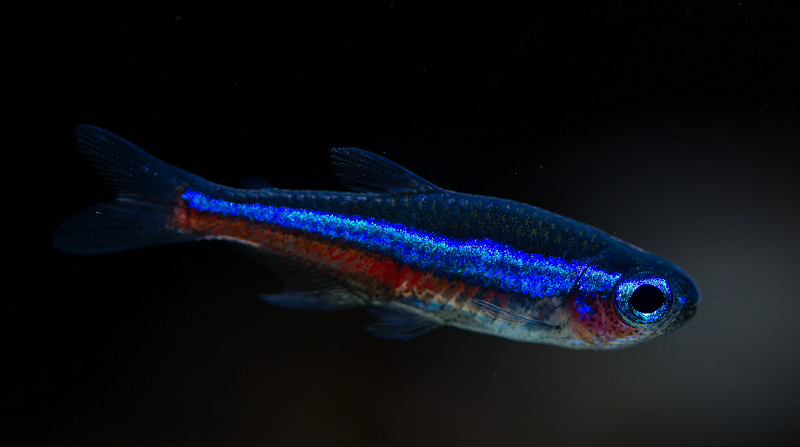
The Green Neon Tetra is a fish that often gets overlooked in favor of its more popular relatives, the Cardinal Tetra and the Neon Tetra. Despite their similarities in body shape and primary blueish-green coloring, the Green Neon Tetra stands out with its vibrant green coloration and less noticeable red patch.
Found primarily in the Amazon river basin in South America, these fish prefer mellow blackwater areas with a sandy substrate and plenty of vegetation. They are shy fish that do best in shoals and are happiest in an environment that mimics their natural habitat of acidic, low-light water.
With their bright green coloration and peaceful temperament, the Green Neon Tetra makes a great addition to any freshwater tank. So if you’re looking for a unique and eye-catching fish, don’t overlook the Green Neon Tetra!
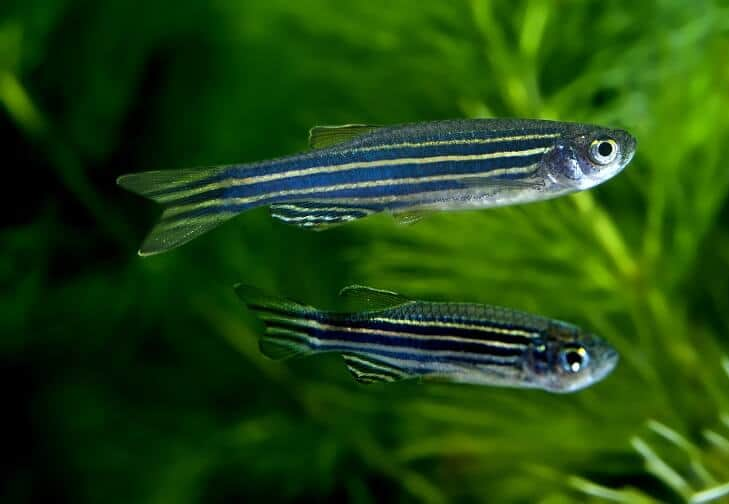
Zebra danios are a popular choice for freshwater fish hobbyists due to their ease of care and attractive zebra-patterned bodies. With a wide range of water temperature tolerance and the ability to withstand varying water conditions, these fish are hardy and adaptable. The distinctive blue-purple horizontal stripes running from gill to tail set off the slim, silver-gold body, making the zebra danio easy to recognize.
There are several variations of the zebra danio, including albino, golden, veil-tailed, long-finned, and leopard, with the latter being a popular variety characterized by black spots over the entire body. The brightly colored GloFish variety is also available, with fluorescent pigment that makes the body orange, green, blue, purple, or red, but still retaining the dark stripes.
Zebra danios are small and peaceful, making them well-suited for a community aquarium. They get along with most tankmates but may nip fins of fish with long-flowing fins, such as angelfish, bettas, and guppies. Good potential tankmates include similar-sized danios, barbs, corydoras catfish, tetras, loaches, mollies, platys, and swordtails.
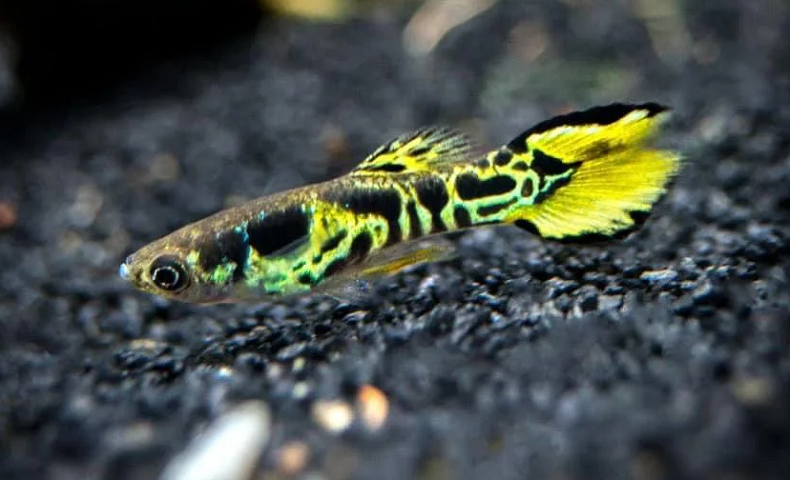
Endler’s livebearers are a small, energetic, and colorful species of fish that are great for beginners to keep in a freshwater aquarium. They are a type of livebearer, meaning they give birth to live young, and are often recommended as an alternative to guppies and mollies because they are hardier and do not require as much inbreeding. Endler’s livebearers come in a variety of colors, including black bar, tiger, cobra, El Silverado, and lime green.
Endler’s livebearers are easy to care for and are compatible with most peaceful community fish. They grow up to 1 inch (2.5 cm) for males and 1.8 inches (4.5 cm) for females. The males are slender and colorful, while the females are rounder and tannish-silver in color. These fish are active swimmers and enjoy being in a shoal with other Endler’s livebearers. To keep their population under control, you can add some African dwarf frogs or other predatory fish to your tank.
- Kuhli Loach
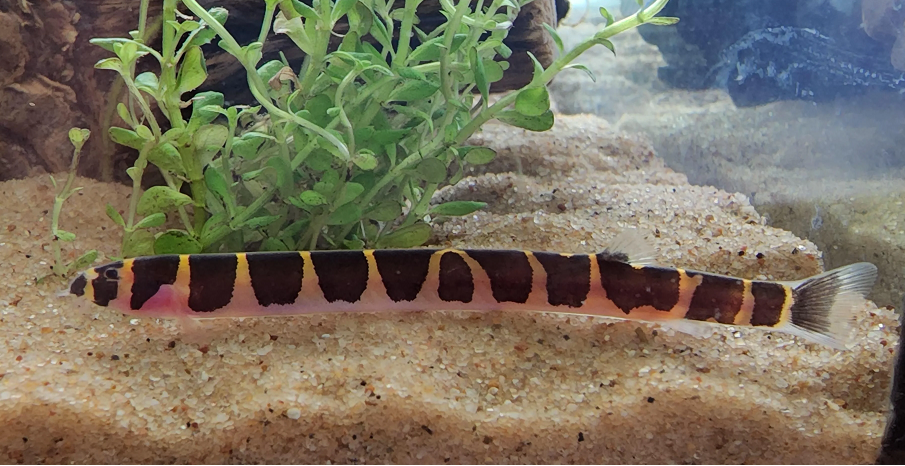
The Kuhli Loach is a unique and fascinating fish that is popular among freshwater aquarium hobbyists. They are known for their eel-like bodies, beady black eyes, and bristly barbels or whiskers around their mouths. The most common type of Kuhli Loach is Pangio kuhlii, which has alternating pinkish-yellow and dark brown bands, but there are other varieties like black kuhli loaches (Pangio oblonga) and silver kuhli loaches (Pangio anguillaris) available.
With their slender bodies and small fins, Kuhli Loaches are often mistaken for eels. They have multiple physical features that make them stand out, including four pairs of barbels around their mouths, sharp spines just below their eyes, and a dorsal fin located on their lower third of their body. Kuhli Loaches are usually multi-colored with a light base color and between 10 to 15 dark stripes.
The average size of Kuhli Loaches is 3 to 4 inches, making them an ideal choice for small aquariums. They are also hardy and beginner-friendly, and get along well with other peaceful community fish. A popular variant of the Kuhli Loach is the black Kuhli Loach, which is completely black or dark brown. With its unique appearance and ease of care, the Kuhli Loach is a great addition to any freshwater aquarium.
- Licorice Gourami
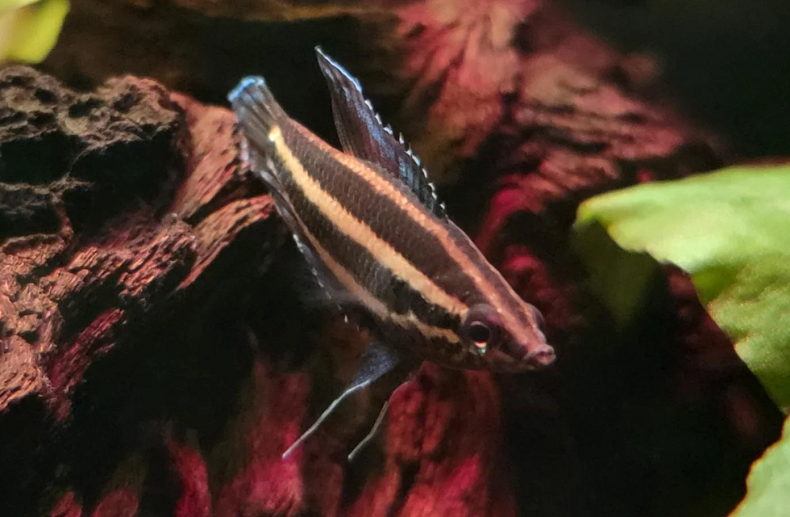
Licorice gouramis are a beautiful species of fish with a silver body and black vertical stripes that run from their dorsal fin to their head. The tail, belly, and back fin have blue, green, and red hues that give them a stunning appearance in a dark-substrate aquarium. The males are more vibrant in color, with long filamented fins in blue, green, and red, and during breeding season, their black stripes on a light brown body with three white lines positioned on each side really make them stand out!
When it comes to the female licorice gourami, they are a bit more understated with a light brown body on top and dark brown below. However, their blue-white anal fins near the body or along the margin add a pop of color. Mature licorice gouramis grow to about 2.5 inches (6 cm) in length and during breeding season, the female becomes plumper with eggs and the male becomes even more colorful!
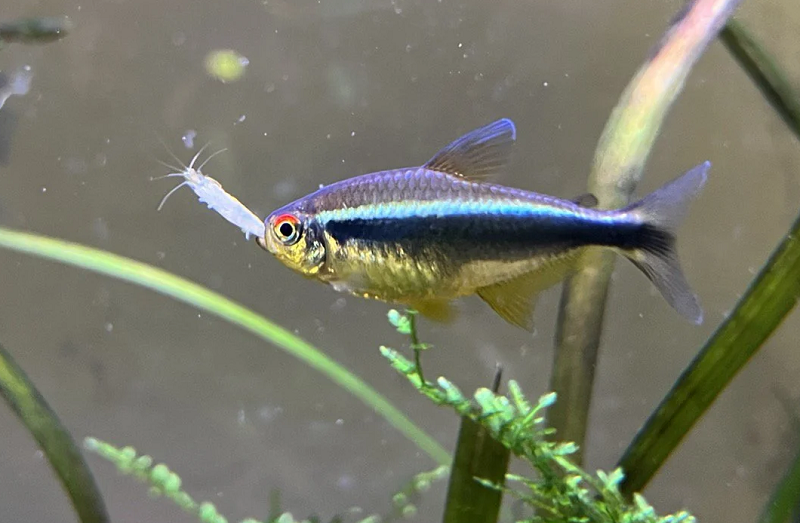
The black neon tetra is often overlooked, but it’s a real gem in the freshwater aquarium world! With a strong constitution and robust health, these tiny tetras are the perfect choice for anyone starting a new tank. And, with a nano size of only 1-1.5 inches (2.5-3.8 cm), they’re great for smaller aquariums, while their cheap price makes them a popular choice for filling up a large tank with lots of schooling fish.
These South American fish come from the Paraguay River basin in Brazil and are known for their hardiness and activity level. They may look like neon tetras with their two pearly white and black stripes, but they’re actually in the same genus as ember, serpae, and lemon tetras. And, while both black neon tetras and neon tetras are about the same length, black neon tetras are a bit larger with a taller body depth. Plus, they tend to be bolder and swim in the upper half of the tank, while neon tetras can be a little shyer and stick to the lower half.
- Pea Puffer
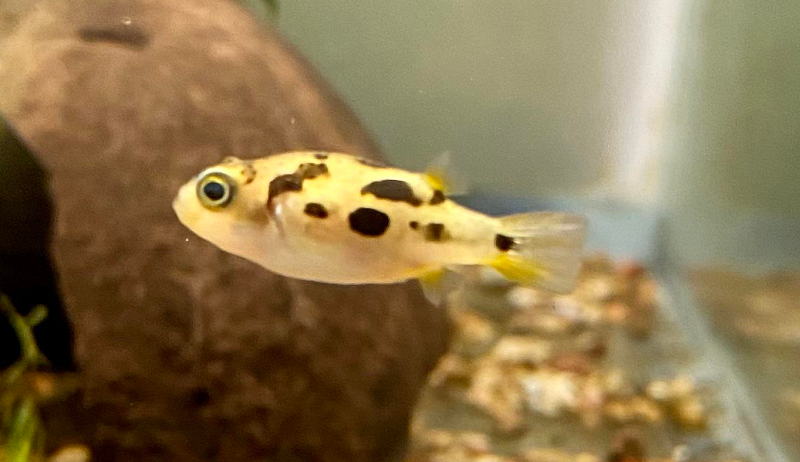
Pea puffers are one of the coolest fish you can keep in a small aquarium! With their helicopter-like maneuverability, independently moving eyes, and their ability to inflate like a water balloon, these little creatures are just amazing. Carinotetraodon travancoricus, also known as the pea puffer, Indian dwarf puffer, Malabar puffer, and pygmy puffer, comes from the southwestern tip of India and is the smallest pufferfish in the world, growing only to 1 inch long. They can usually be found at your local fish store for anywhere from $3 to $15.
The pea puffer is a compact fish species with a maximum length of 1.4 inches and a round body with a thinner backside and large eyes that make them look adorable. The male pea puffer has a bright yellow belly and dark stripe, with a golden green color all over, while the female has a white-yellow belly and a lighter yellow-green color with no stripe. Both sexes sometimes feature spots across their body, but others may not have spots at all. With vibrant colors and markings, it’s easy to tell the difference between male and female pea puffers as they mature, but it can be difficult when they’re still young. So, make sure to choose the correct gender before setting up your aquarium with a pea puffer!
- Dwarf Gourami
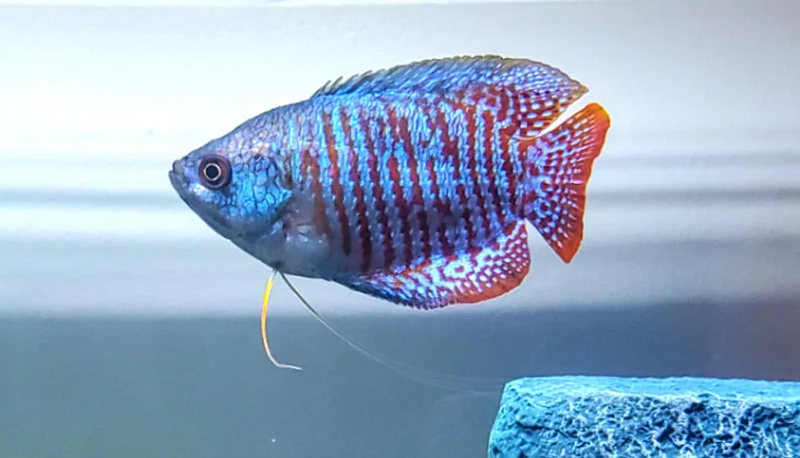
The dwarf gourami is a peaceful and shy fish that will swim together in pairs. As a labyrinth fish, they need access to the water’s surface to breathe with their lung-like labyrinth organ. The male dwarf gourami is slightly larger than the female and boasts a bright orange-red body with turquoise-blue stripes extending into its fins. The female, on the other hand, remains a duller, silvery blue-gray color.
There are several color variants of the dwarf gourami, including powder blue, neon, rainbow, and red/blushing. The powder blue variety is predominantly blue with a little red on the body, while the neon displays a brighter blue pattern. The rainbow has an especially brilliant orange-red body with blue stripes and a green-gold metallic sheen. The red, or flame gourami, is almost solid red with solid blue dorsal fins.
These fish are usually peaceful and can be kept with other species that are not too large or aggressive. Some suitable tank mates include dwarf cichlids, cardinal tetras, and neon tetras. Just be careful not to keep other brightly colored species as they may cause the male dwarf gourami to become aggressive, mistaking them for rivals.

The ember tetra is a popular fish among aquarists due to its striking appearance. These fish are almost entirely orangeish-red, making them mesmerizing to watch swim around in your tank. The brightness of their color holds true wherever it’s present on their body, giving them a very distinct and sharp look.
Their dorsal fins are tall and thin with a gradient that fades from their primary color to a slightly darker tone at the back, while their caudal fins are forked with a more drastic color transition. The ventral and pectoral fins of the ember tetra are almost completely clear, making them flicker as they swim. Their bodies have a classic tetra build, being thicker and taller in the front half but thinning out behind the dorsal fins.
The diet and level of care you provide will directly impact the brightness of their colors. A dull ember tetra usually means it hasn’t been cared for properly. The average size of an ember tetra is just under 1 inch, making it slightly smaller than the popular neon tetra.
- Neon Tetra
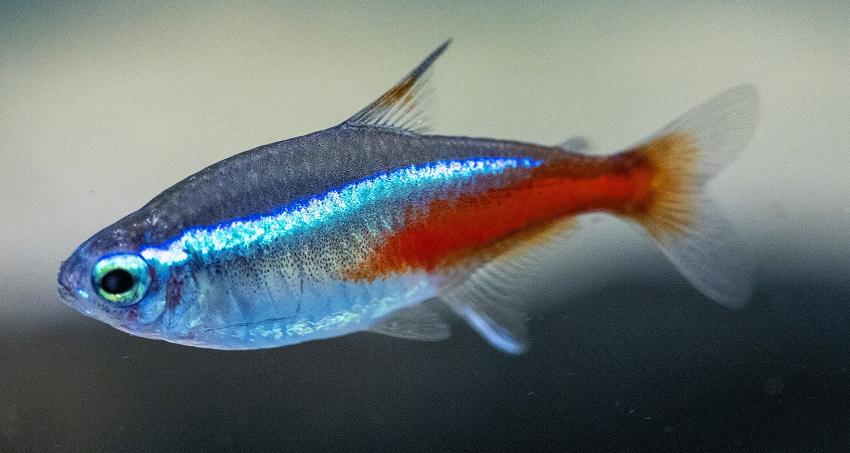
The neon tetra is a dazzling and hardy little fish that was originally imported from South America. With a peaceful disposition, neon tetras must be kept in groups of at least half a dozen and can be kept with other non-aggressive species of fish. They have a life expectancy of 5 or more years.
With a slender torpedo-shaped body that reaches no more than 1.5 inches in length, the neon tetra makes up for its size with its bright coloration. From the tip of its nose to the adipose fin, it has a bright neon blue stripe and a white-silver belly below. A bright red stripe extends from the middle of the body to the tail, making the neon tetra one of the most popular aquarium fish with its striking red, white, and blue combination. The red stripe only extends from the middle of the body to the tail, making it different from the cardinal tetra which has a red stripe that runs the entire length of the fish.
When choosing neon tetras at the pet store, pick specimens that are actively swimming and robustly colored, as faded colors can be an indication of poor health. Like other colorful fish, the neon tetra’s bright colors will fade at night when it is resting, when it becomes alarmed, or when it is ill.
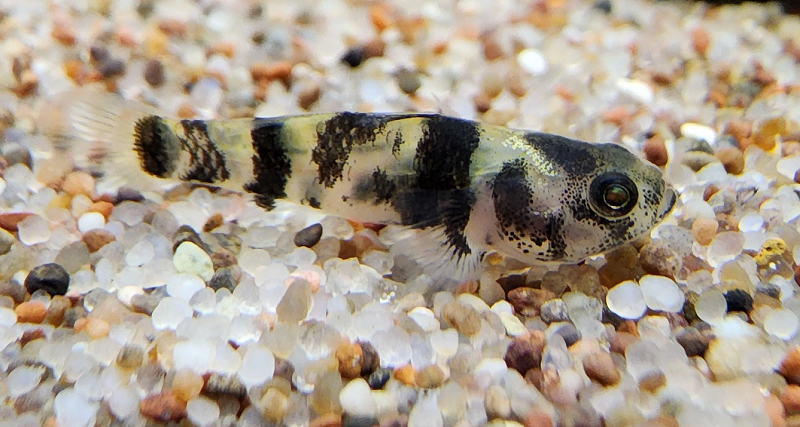
Bumblebee Gobies are fish with a distinct and eye-catching striped pattern of black and yellow that covers their entire bodies. The hue of the yellow stripes can vary from pale yellow to orange, with male fish often being the most vibrant. The shape of the bumblebee goby is classic “goby”, with a small head, round eyes and a slender body. Males tend to be slimmer than females. The fins of the bumblebee goby are mostly transparent, with some having a little black in them, which is an extension of the corresponding stripe.
Despite their small size, bumblebee gobies are a fascinating species that make great nano fish. With an average size of only 1.5 inches (3.8 cm) at full maturity, they’re a great option for anyone looking for a smaller fish. However, if you want to maximize their lifespan, you may need a slightly bigger setup. Bumblebee gobies have a lifespan of about three years under normal conditions, but their specific care requirements in captivity need to be taken into consideration.

Phoenix Rasboras are vibrant and active nano fish that are often misidentified due to their similar markings to other Rasbora fish. The fish have black spots on their body and are marked with bright orange-red around each spot. The orange-red coloration connects and extends towards the head, and the fins have red markings at the ends. The rest of the body of the Phoenix Rasbora is a dull gray color that fades into a transparent color towards the fins. The black spot in the center of the body is much darker than in other Rasboras and they lack the black line that runs along the body of other Rasboras.
Male and female Phoenix Rasboras can be distinguished by the size of the black spot in the center of their bodies. Female Phoenix Rasboras have a much larger black spot and a rounded body shape when they are carrying eggs, while males have slimmer bodies and may display a darker red color when they are ready to spawn. Phoenix Rasboras are micro predators and prefer a carnivorous diet, which includes small insects, worms, tiny crustaceans, and zooplankton. In captivity, they will readily accept dried foods but should also be given live and frozen foods such as Daphnia to bring out their brightest colorations and encourage spawning.
- Pygmy Hatchetfish
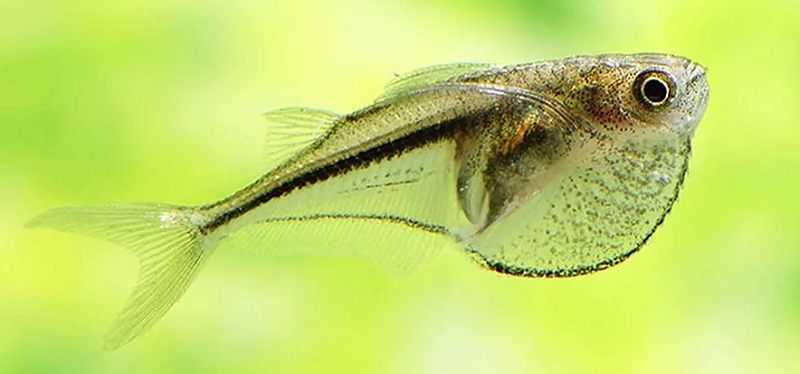
The Pygmy Hatchetfish is a peaceful but timid species that is best kept in an aquascaped tank with similarly-sized, peaceful fish. In an aquarium, they prefer a well-matured environment with floating plants and a minimal water movement, with lighting that is not too bright. The top of the tank should be well covered as they are known to jump.
Found primarily in slow-moving shallow waters in the Peruvian Amazon, the Pygmy Hatchetfish are unique and the smallest species of hatchetfish. In the wild, they inhabit clear, warm, slightly acidic water and spend much of their time in the mid-water column below the surface. As a social, schooling fish, they will do best in groups of at least 5, ideally 8-10, and require excellent water quality and peaceful tankmates.

The black phantom tetra is a peaceful and colorful fish that comes from northern Paraguay and central Brazil. It is a great choice for a community aquarium and is best kept in groups of at least eight or more. The fish gets its name from the “eye patch” behind its gills and the males are mostly smokey-silver while the females display brilliant color. You may even get to observe “mock fight” displays between males, which are interesting to watch but do not harm the fish.
Black phantom tetras look stunning when paired with their red-hued cousins such as the red phantom, jewel, or serpae tetras. They have a silvery gray body with a vertical splash of black-edged on the front and back and a bluish-white just behind the gills. The real eye of the fish is edged in black on the top and bottom. In captivity, they do best in a well-planted tank with subdued lighting and a dark substrate such as river sand. The tank should also include some dried leaves and driftwood. It’s important to change the water frequently as black phantom tetras are sensitive to poor water quality. They are compatible with other peaceful species but can be threatened by more aggressive fish, so it’s best to keep them with other peaceful species such as gouramis, danios, rasboras, or small, non-aggressive cichlids.
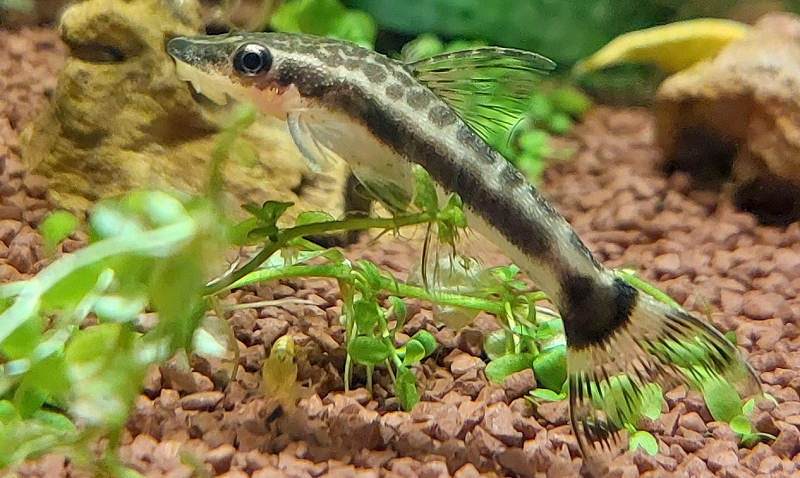
Otocinclus Catfish are a peaceful and hardworking addition to your aquarium. They are great for cleaning glass and plants, and can live harmoniously with other tank mates. But, before you add them to your tank, it’s important to make sure you’re buying healthy fish.
Many Oto cats are wild caught and at risk of starvation from being housed in overcrowded tanks with insufficient food. When shopping for Otocinclus, look for the ones with the fullest bellies and be cautious of those listed at a lower price as they may be unhealthy. Make sure to provide a good source of algae for them to feed on and look for those sold at stores with a reputation for healthy fish.
Final Thoughts
And there you have it folks! The best nano fish for your aquarium. From the playful Otocinclus to the neon-bright Neon Tetra, there’s a fish for every personality. So why not add a little excitement to your tank and bring home one (or a few) of these charming little creatures today?
Remember, owning fish isn’t just about having something pretty to look at, it’s about creating a thriving underwater ecosystem. So take your time, do your research and choose a fish that’s right for you and your aquarium. And most importantly, have fun!
Don’t be afraid to get creative with your tank setup either. Add some plants, rocks or even a castle to create a unique underwater world. Dive in and make a splash with your new nano fish friends!

Tim Priest, a renowned aquarium expert with over 15 years of experience in aquatic gardening and fish education, is dedicated to helping enthusiasts create stunning and thriving aquatic environments. As the founder of LearnTheAquarium.com, Tim shares his wealth of knowledge, passion, and expertise through engaging articles, educational resources, and personalized advice.
Discover the secrets to creating captivating underwater landscapes and maintaining healthy aquatic ecosystems. Join Tim on an exciting journey and let your aquarium adventure begin!
